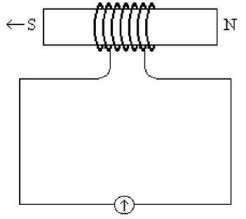Water (density = 1 × 10^3 kg/m3) flows at 16 m/s through a pipe with radius 0.040 m. The pipe goes up to the second floor of the building, 3.0 m higher, and the pressure remains unchanged. What is the speed of the water flow in the pipe on the second floor?
a. 13 m/s
c. 15 m/s
b. 14 m/s
d. 16 m/s
B
You might also like to view...
A 4.0-kg particle is moving horizontally with a speed of 5.0 m/s when it strikes a vertical wall. The particle rebounds with a speed of 3.0 m/s. What is the magnitude of the impulse delivered to the particle?
a. 24 N/s b. 32 N/s c. 40 N/s d. 30 N/s e. 8.0 N/s
A 2.0-kg block is projected down a plane that makes an angle of 20° with the horizontal with an initial kinetic energy of 2.0 J. If the coefficient of kinetic friction between the block and plane is 0.40, how far will the block slide down the plane before coming to rest?
a. 3.0 m b. 1.8 m c. 0.30 m d. 1.0 m e. 1.3 m
Faraday's Law: A bar magnet is pushed through a coil of wire of cross-sectional area 0.020 m2 as shown in the figure. The coil has seven turns, and the rate of change of the strength of the magnetic field in it due to the motion of the bar magnet is 0.040 T/s. What is the magnitude of the induced emf in that coil of wire?
A. 5.6 × 10-3 V B. 5.6 × 10-2 V C. 5.6 × 10-1 V D. 5.6 × 10-4 V E. 5.6 × 10-5 V
If the frequency of an electromagnetic wave increases, does the energy of the photon increase, decrease, or stay the same?
What will be an ideal response?